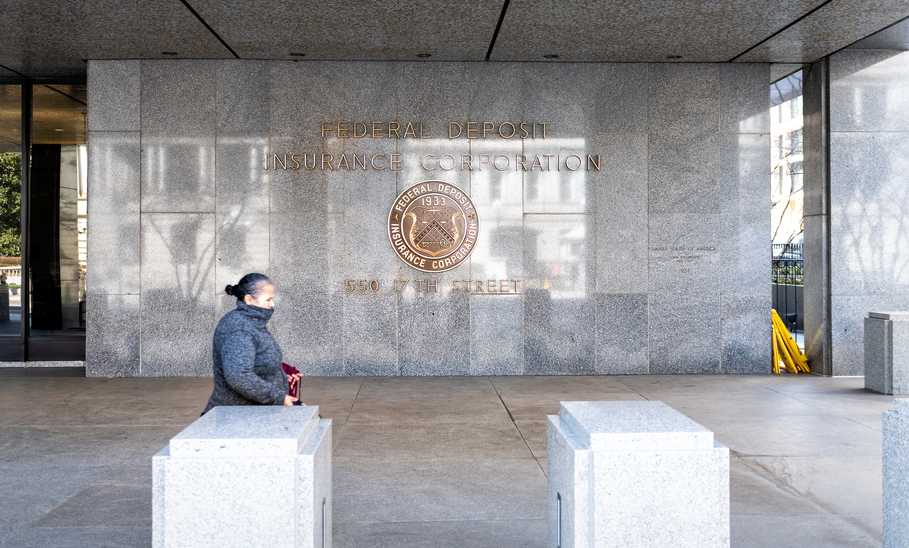With Federal Deposit Insurance Corporation (FDIC) insurance, the money you keep in your bank accounts is protected by the federal government if your bank fails. When a bank or financial institution is federally insured, it will have the FDIC insurance logo on its website. The FDIC insures up to $250,000 per depositor, per institution, per ownership category, and FDIC insurance covers several types of deposit accounts and other official items, such as cashier’s checks and money orders.
How does FDIC insurance work?
The FDIC protects the money that depositors put in insured banks in the unlikely event of a bank failure. Each depositor is insured to at least $250,000 per insured bank per ownership category. If a depositor has more than $250,000 in assets, some of their deposits may not be insured.
FDIC-Insured Accounts: Pros and cons
Pros:
- Provides an added layer of protection that you won’t find in a stock market investment.
- If the total of your monetary assets exceeds $250,000, you can break it up among several banks so that the full amount is covered.
- If an account is owned jointly, that account is insured up to $250,000 per person.
Cons:
- If you hold deposits in the same ownership category (say, multiple savings accounts with the same bank), those deposits are counted together toward the $250,000 limit.
What is covered by FDIC insurance?
FDIC insurance covers the following:
What does the FDIC not cover?
FDIC insurance does not cover investments. These can include:
- Stocks.
- Bonds.
- Mutual funds.
- Cryptocurrency assets.
- Life insurance policies.
- Annuities.
- Municipal securities.
- U.S. Treasury bills, notes, safe deposit box contents.
FDIC-insured account requirements
You don’t have to purchase deposit insurance or even just qualify for it. When you open a deposit account in an FDIC-insured bank, you are automatically covered.
How to check that all your money in your accounts is insured
First, of course, make sure that your bank is FDIC-insured. After that, make sure that you have no more than $250,000 in any one account ownership category at the bank.
For example, if you have $250,000 in a savings account and another $250,000 in a retirement account, both should be fully covered. However, if you have $500,000 in one savings account, only $250,000 will be covered.
If you want your $500,000 savings balance fully protected, open a second savings account with a different bank and transfer over $250,000.
What happens when a bank fails?
Though unlikely, bank failures do occur, and the FDIC responds in two ways. It pays insurance within a few days after a bank fails, generally on the next business day, “by either
- Providing each depositor with a new account at another insured bank in an amount equal to the insured balance of their account at the failed bank, or;
- By issuing a payment to each depositor for the insured balance of their account at the failed bank.”
FDIC insurance limits and ownership categories
The standard insurance amount is $250,000 per depositor, per insured bank, for each account ownership category. The limit is not per account. For this reason, a joint account held by a married couple can be insured for up to $500,000, as each depositor is covered for $250,000.
Also, a depositor who holds several types of accounts at an FDIC-insured bank may qualify for more than $250,000 in coverage if their monies are in eligible accounts in ownership categories. For instance, if you have both a savings and a CD account, you will have $250,000 coverage per account type, or $500,000 total.
Ownership Categories
The FDIC ownership categories include:
- Single accounts.
- Certain retirement accounts.
- Joint accounts.
- Revocable trust accounts.
- Irrevocable trust accounts.
- Employee benefit plan accounts.
- Corporation/partnership/unincorporated association accounts.
- Government accounts.
History of FDIC-Insured Accounts
The FDIC was created in the wake of the Great Depression, when about 9,000 banks failed, resulting in the loss of approximately nine million savings accounts. The FDIC became a government agency through the Banking Act of 1935 after many state-sponsored deposit insurance plans proved to be unsuccessful.
The amount that the FDIC insures has been revised several times. In 1934 the FDIC insured up to $5,000 per account. In 1980 the limit was increased to $100,000. In 2008 the amount was temporarily increased to $250,000, which became permanent in 2010.
How to find out if your bank is FDIC-insured
The Consumer Financial Protection Bureau recommends that you call your bank to confirm your insurance coverage. You can also visit the Electronic Deposit Insurance Estimator or call the FDIC Call Center at (877) 275-3342 (877-ASK-FDIC). For the hearing impaired, call (800) 877-8339.
TIME Stamped: FDIC insurance makes banking safer for everyone
FDIC insurance is provided by the federal government and insures customer accounts at most U.S. banks. The FDIC insures $250,000 of deposits for each depositor, per bank, per ownership category. This reassures depositors that their money is protected and assessable should their bank fail.
The FDIC insures several different types of accounts, including single accounts, joint accounts, and retirement accounts. An individual will be insured for up to $250,000 for each account type, and a person can hold insured accounts at more than one bank as long as each is separately owned. Joint accounts are insured for up to $250,000 per person, not per account.
Frequently asked questions (FAQs)
What happens if you have more than $250,000 in the bank?
If one person has more than $250,000 in a single bank in a single ownership category, the amount over $250,000 will not be covered by the FDIC.
What are three products not covered by the FDIC?
The FDIC does not cover investment products (stocks, bonds, mutual funds, etc.), insurance policies, and the contents of safe deposit boxes.
Does the FDIC insure $250,000 in multiple accounts?
The rule is that it is $250,000 per person, per ownership category, and per bank, so if multiple accounts of the same type each have $250,000 at the same bank, the answer is no. In such a circumstance you should protect yourself by opening accounts at different FDIC-insured banks, so you don’t have more than $250,000 in any one of them.
The information presented here is created by TIME Stamped and overseen by TIME editorial staff. To learn more, see our About Us page.





